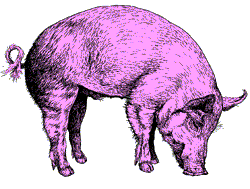
When I bought my first house a number of years ago, _It was all about the down payment_. Young people would scrimp and save for years to get enough for a down payment and even then, it was rarely 20% down, so the lender would require PMI insurance.
PMI insurance covers the risk on portion of the 20% on top that is exposed. A 10% downpayment would mean that PMI would cover the 10% that was replaced by a mortgage rather than the downpayment. In other words, the borrower pays a non tax-deductible fee, to cover the additional risk by the lender, although in reality, the lender has already considered the extra risk in the rate that the borrower qualifies for. It stretches the borrower, who is already stretching to make the mortgage payment. In other words, its unfair to the consumer and unnecessary.
_But I digress…_
That young couple who had struggled to get together the downpayment then hoped that values would rise so they can shed their PMI payment once their home equity reaches 20%.
But today, the [piggyback mortgage [MND]](http://www.mortgagenewsdaily.com/892005_Piggyback_Loans.asp) has been one of the catalysts for the housing boom in addition to low mortgage rates. The borrower can essentially finance a large portion of the down payment with a second mortgage at the time of purchase. This allowed people to afford homes in high priced areas. _Now its all about the monthly payment._
The private mortgage insurance industry has reportedly [lost 40% of their market share [Bankrate.com]](http://www.bankrate.com/brm/news/mortgages/20050303a1.asp) to piggybacks.
But now Wall Street is concerned. In Kenneth R. Harney’s [Piggybacking Onto Trouble [WaPo]](http://www.washingtonpost.com/wp-dyn/content/article/2006/07/07/AR2006070700013.html) he states:
>As of July 1, the most influential ratings agency in the mortgage arena, Standard & Poor’s Corp., has upped the ante for lenders who seek to fund piggyback deals through capital market financings. The move is likely to raise interest rates and fees for some home buyers this summer, say mortgage experts, and could reduce the volume and availability of piggyback programs overall.
Piggy back loans are likely to become more expensive, which will further weaken demand, and probably have more impact on higher priced housing markets which traditionally see higher LTV’s like the northeast and the west coast. In some markets like California, piggybacks accounted for 60% of all new loans.
But why all the fuss?
S & P found that piggyback loans were 43% to 50% more likely to go into default. Thats because piggy backs are usually tied to adjustable mortgages and mortgage rates have been rising.
Financial regulators are supposedly issuing new guidelines to require lenders to pull back on these loans as well as [payment-option loans and interest-only loans](http://www.consumerreports.org/cro/personal-finance/risky-home-loans-805-home-loan-equity-information-fixed-rate-loan/overview/) because of the unseen risk they present to the housing and financial institutions.
While its good to have regulations and guidelines on this loan product, I am not so sure piggybacks are much worse than private mortgage insurance in he grand scheme of things. I think the real issue here is that this is a relatively new mortgage product that ran amuck in the housing boom and simply needs to have more controls in place.

